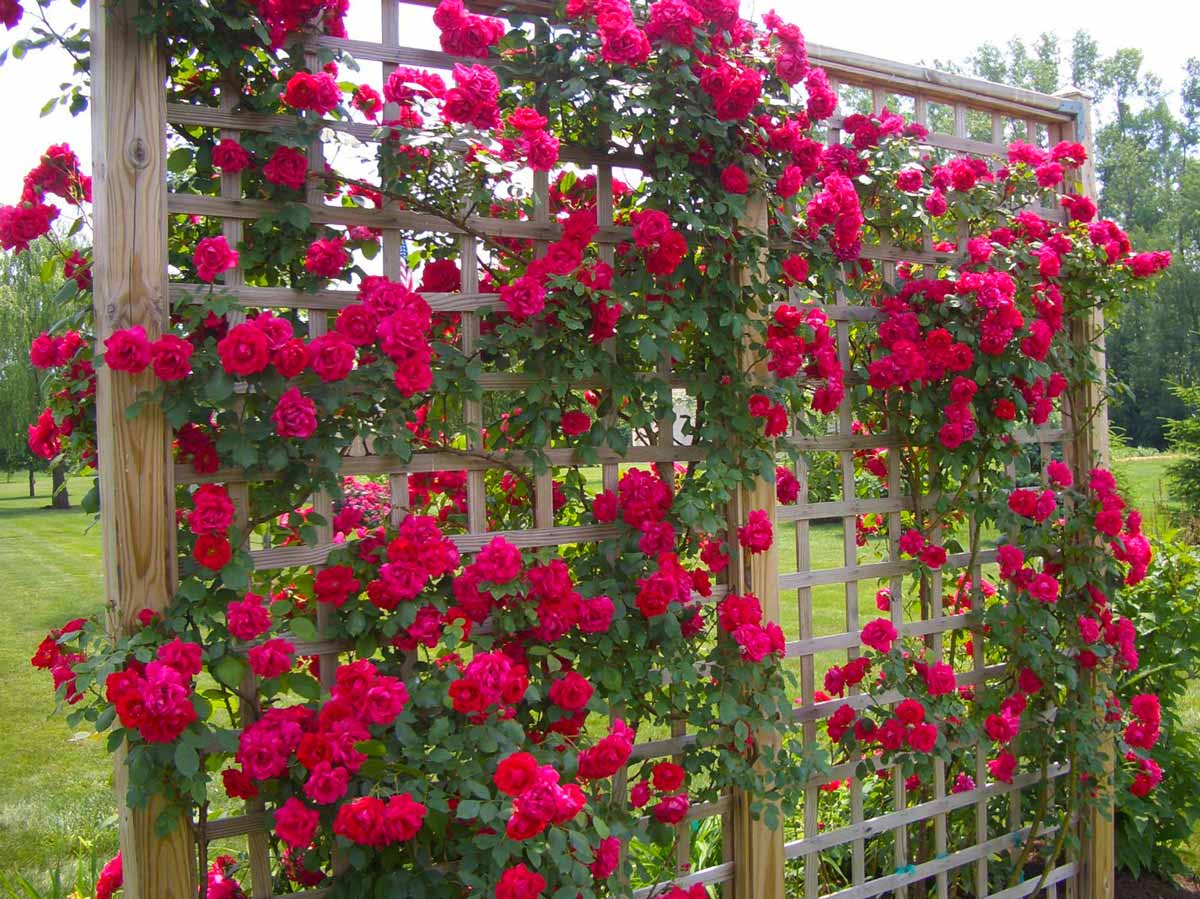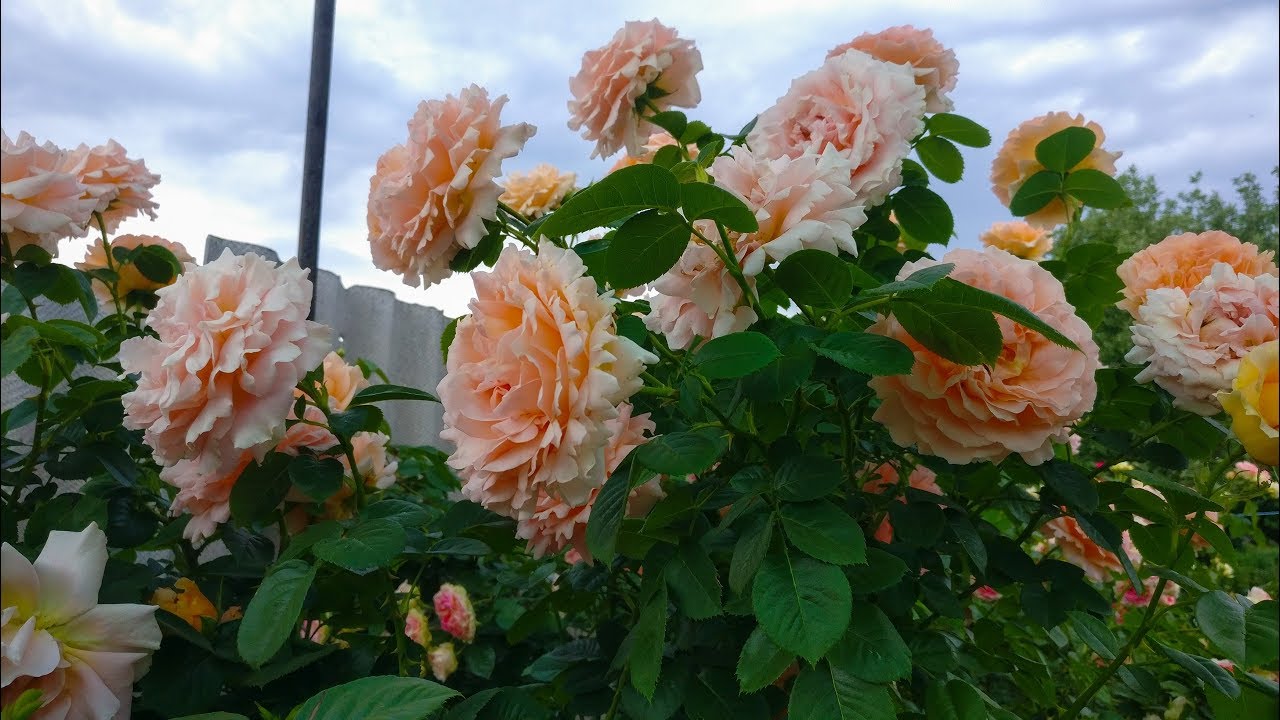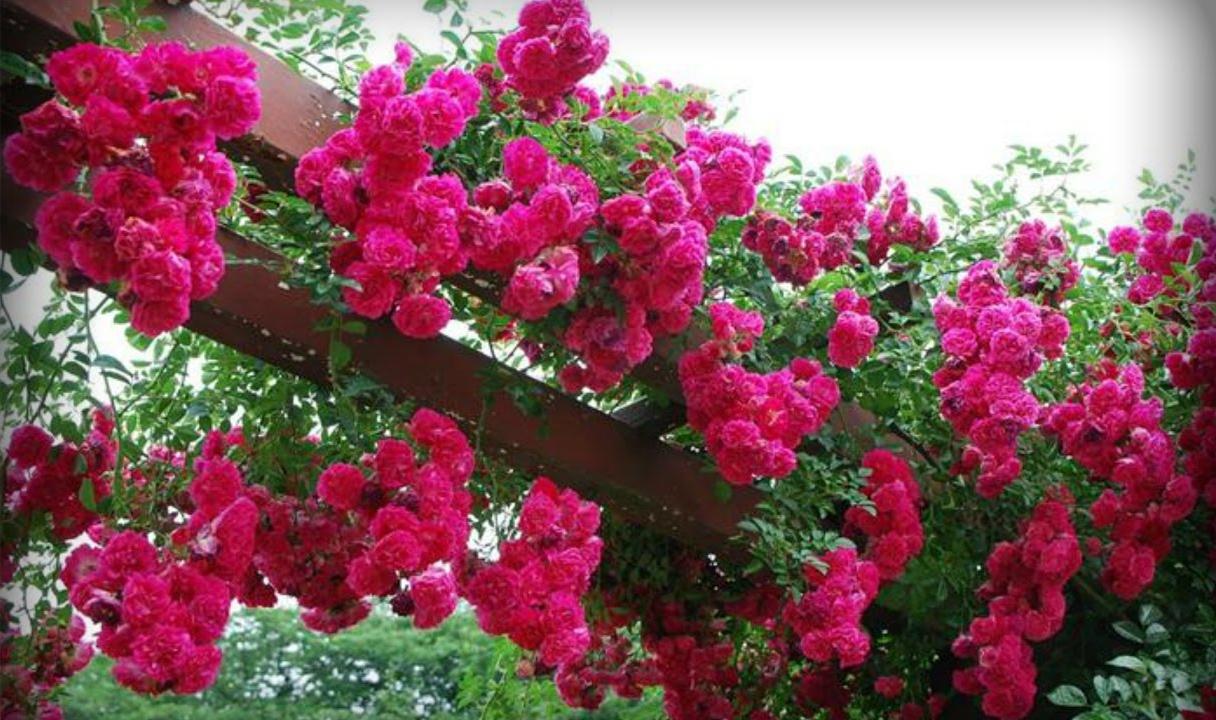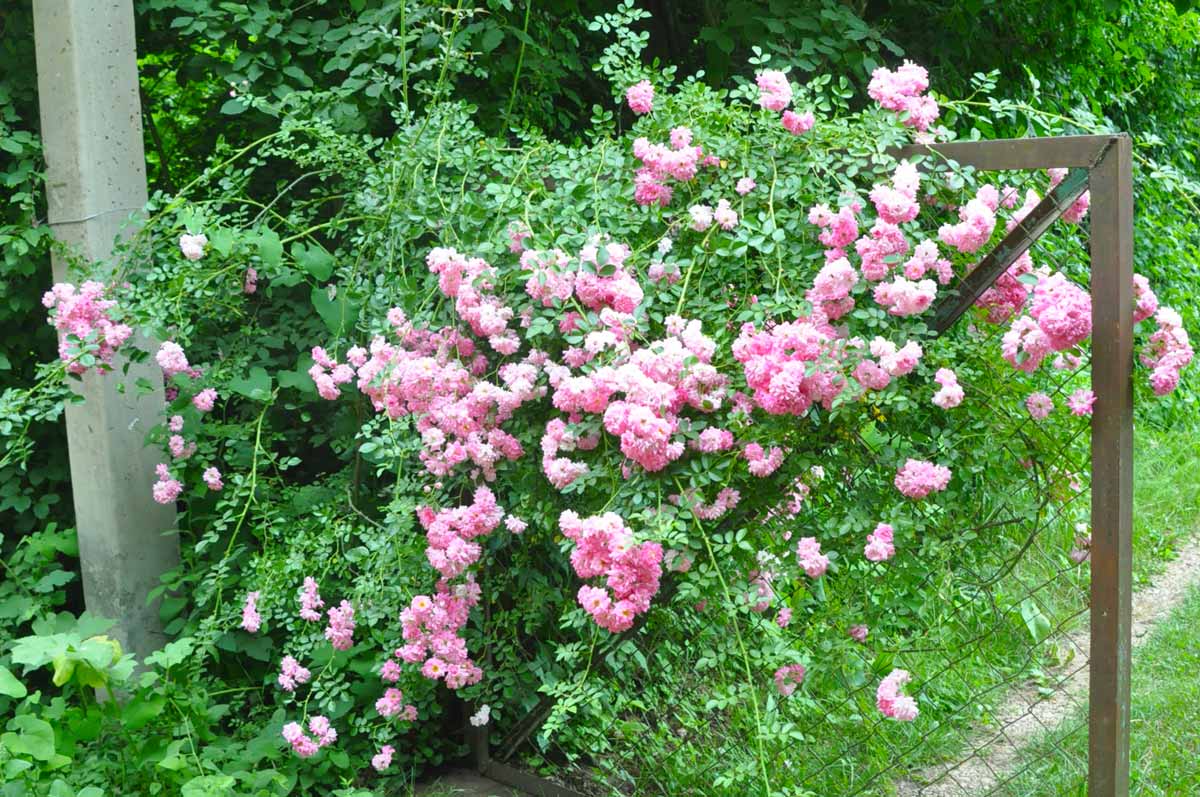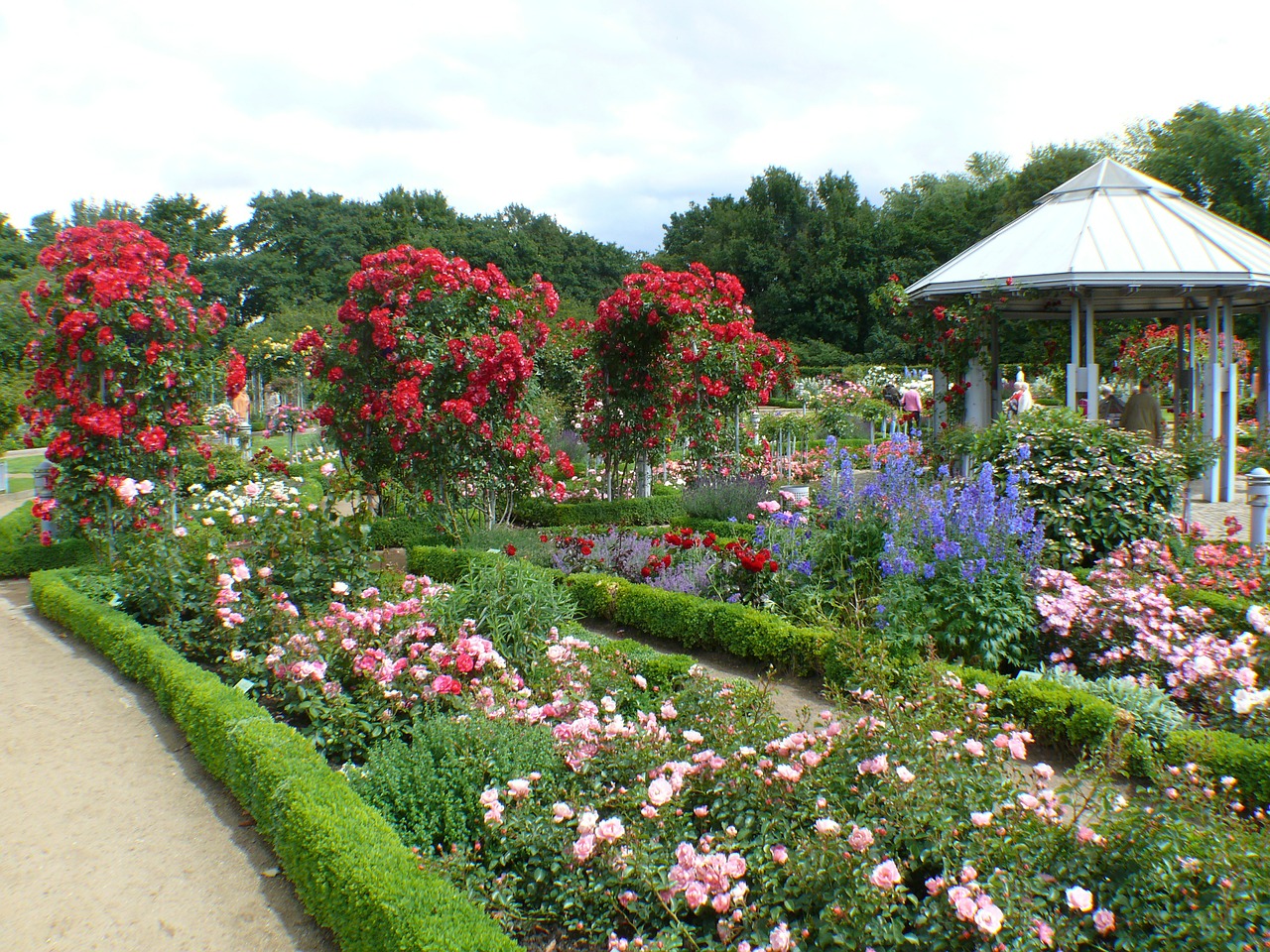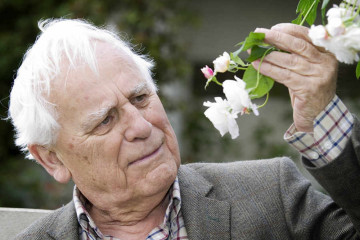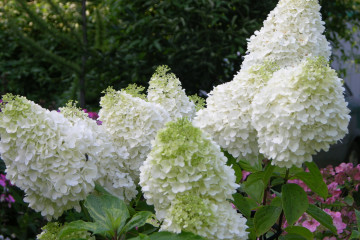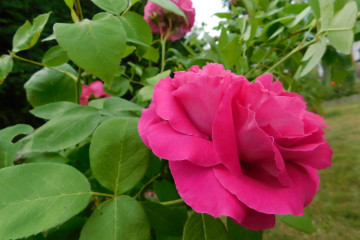Climbing roses - varieties, winter-hardy, constantly blooming, names
Content:
Climbing roses are very popular all over the world, and Russia is no exception. Which is understandable, because this is an excellent choice if you need to twist a gazebo, trellises, or tighten a window in order to get a rich green shadow on a hot summer day. It is not surprising that breeders have been working for decades, breeding the newest climbing roses - varieties that soon appear in summer cottages. Of course, many flower lovers would be interested to learn more about this type of plant, and at the same time study the features of caring for it.
Climbing roses - description
Before talking about the best climbing roses, it will be useful to talk about certain features that allow you to combine them all into one kind.
As the name implies, they are not bushes (like most varieties of roses), but whip shoots. Moreover, their length may well reach five meters, and even more with high-quality care.
At the same time, they are devoid of entwining organs, for example, tendrils, like in grapes. Because of this, it is necessary to use a special frame or other auxiliary device on which roses will have to be hung manually.
The color palette is huge. Among these roses there are varieties with white, burgundy, cream, crimson, peach, pink and even lilac flowers. And they differ significantly in size - there are varieties that bloom with large, beautiful, but relatively few flowers. In others, the flowers are rather small, very delicate and they literally cover the entire lash. Of course, it looks just amazing.
International grouping of plants
To simplify the definition, experts have introduced a special system in which all varieties of climbing rose are divided into several categories. Each of them has certain characteristics that it is useful to know about.
Multiflora
Gardeners looking for small-flowered but densely flowering varieties should choose this popular category. The plant is literally covered with flowers - in some cases their number reaches fifty. And the length is impressive - the lashes often reach seven meters.
It is important that multiflora is quite unpretentious, thanks to which it can be grown even in central Russia with its harsh climate, and will bloom profusely, delighting the grower and his loved ones every summer.
Vishuriana
Luxurious flowers with irregularly shaped petals, which are sure to please lovers of unusual flowers. It's nice that the color range is quite rich - here you can find a yellow climbing rose, red, pink, and many other flowers. The length of the lashes is average - mostly about 4 meters.
Lambert
The main feature that these varieties possess is the shape of the petals. They are elongated, which is generally not typical for roses. Flowers are quite large, but not too numerous. But the magnificent smell that they spread around will delight even the most picky connoisseur.
Therefore, planting such a miracle on the site is fully justified.
Cordes
For beginners in the world of roses, the best solution will be precisely the varieties of the Cordes category. They have a number of important features:
- winter hardy,
- resistant to diseases and pests,
- not too high (about 1.5-3 meters),
- blooming profusely several times per season - from mid-summer to mid-autumn.
So, this miracle, the basis for which was laid by famous German breeders, will definitely not disappoint even the most picky grower.
Banks
If the reader likes curly yellow roses, then it makes sense to take a closer look at this category. This is a truly amazing plant. Start at least from a height - with good care, lashes can reach 12 meters!
Flowering begins already in mid-late May - small flowers cover the lashes so densely that the plant itself is almost invisible under them. True, there is practically no smell from them, but the spectacle is really exciting. An additional advantage is the absence of thorns on the stems.
Alas, these varieties are more suitable for the south - in central Russia, not to mention the northern regions, the plant may not survive the harsh winter.
Climbing
But these roses, although they are climbing, do not need support - the bushes up to three meters high have a sufficiently solid stem to be held on their own. It blooms quite profusely, the flowers are very large. Moreover, this happens twice a season, although the second wave is much weaker than the first.
Unfortunately, like the Banks rose, it is poorly suited for regions with a temperate climate - it is better to grow Climing in the south of Russia.
The best varieties, characteristics
Of course, before planting roses on the site, it will be useful to study the available varieties in order to choose the most suitable one - fortunately, the range today is simply huge. It will be useful to tell about the most interesting ones in order to simplify the choice of the right one.
- Elf is not too tall, mostly about 1.5-2 meters. But it blooms with the most beautiful yellowish-white flowers. They can be either single or collected in inflorescences of three, which adds special appeal to an already exquisite plant.
- Sympathy is a gorgeous variety with beautiful double flowers. The inflorescences are rather large - 20-30 petals each and up to 10 cm in diameter. It grows very quickly and blooms with regular feeding almost all summer. Easily tolerates low temperatures in winter.
- Indigoletta is a very successful variety that can delight its owner with beautiful flowers twice a season. The first wave is from May to the end of June, and the second is from August to September. The plant is quite tall - up to 3 meters. And it takes up a lot of space - the width can reach 150 cm. Therefore, it is important to leave enough space for development.
- Ilse Crown Superior is a variety with bright white flowers with a creamy shade in the middle. Very large - up to 14 cm in diameter. Flowers are collected in graceful brushes up to 5 pieces. It blooms twice a year. Excellent disease resistance, which greatly simplifies cultivation.
- Bobby James is perhaps one of the most beautiful small-flowered varieties. The diameter of the flowers is no more than 5 centimeters. The petals are creamy white. Collected in large inflorescences. Although it blooms only once, but for a long time - from early June to late July - and extremely abundant - the flowers completely hide the foliage.
- Golden - the variety will appeal to lovers of really large roses. The flowers are double, golden yellow. They are shaped like a bowl filled with petals. The bush is very beautiful, but not high - up to 130 cm without support and up to 180 with support. It is unpretentious and resistant to adverse conditions, making it a good choice for beginners.
- Flammentants is a bush with rich red flowers of medium size - up to 8 cm. Flowers are double, consist of 30-40 petals. The aroma is weak, but the inflorescences can consist of 16 flowers! Length from 3 meters and more.The most abundant flowering period is about 30-40 days. It belongs to the winter-hardy and at the same time is not afraid of fungal diseases - suitable for novice florists.
Features of growing in the garden
Of course, in order for roses to grow normally, constantly bloom in large, bright and numerous flowers, and also easily survive the harsh winter, you need to provide them with appropriate care.
Moreover, there can be no trifles here - from the choice of the place to the landing rules. Therefore it will be useful to talk about it.
How much free space to leave
Most varieties of climbing roses are important to plant near some suitable support. It can be a cord stretched at the right angle, a gazebo, simple trellises, or any others.
It is also necessary to leave enough space for the plant. The distance between the bushes should be at least half a meter - their root system is quite powerful, and if you plant flowers too densely, they will interfere with each other's growth.
In addition, it is advisable to retreat from the support at least 50-100 centimeters - the plant cannot grow completely vertically, it must be located at an angle in order to receive more sunlight.
Conditions for landing
It is best to plant in the fall - early to mid September. Then, having survived the winter, they will grow early in the spring and will delight with beautiful flowers all summer.
First you need to prepare the plant. To begin with, lower the bush with roots in water for a day, then cut off too long (more than 30 cm) or damaged branches.
In the chosen place, dig a square hole about 40-50 cm deep. Pour crushed stone or broken brick on the bottom with a layer of about 10-20 cm, and on top - compost or humus. This is where the rose should be planted, carefully spreading the roots. After planting, water abundantly so that the plant takes root faster.
Examples of garden decoration with climbing rose varieties
In general, climbing roses give a huge scope for the flight of thought of a good designer. For example, they can braid an arch or a gazebo. Also a good solution is to land near the house, pull the cords up to the roof so that the green flowering curtain closes the southern windows on hot summer days.
Finally, you can simply braid the chain-link fence to hide its unpresentability under a layer of beautiful flowers.
Of course, the red climbing rose is a rather picky plant that needs special care. But the beauty that she brings to the site will definitely justify the time and effort that was spent on her cultivation.
